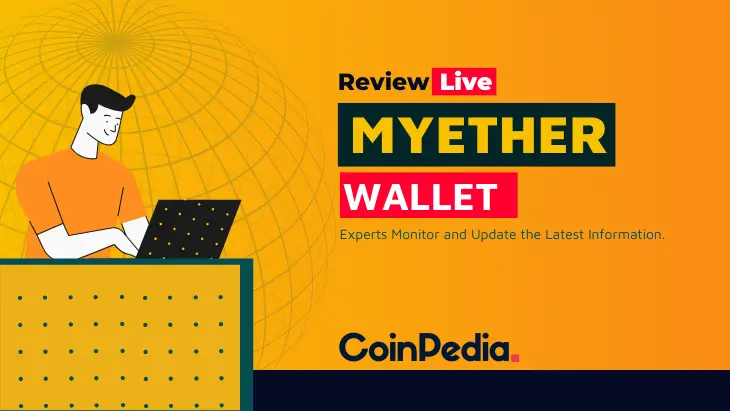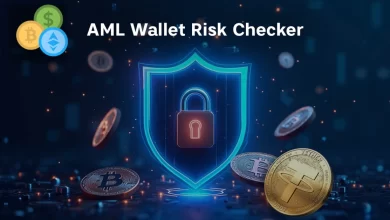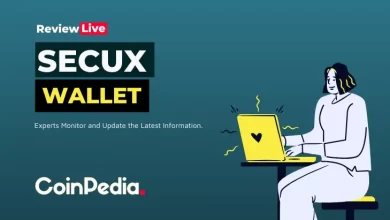
If you have cryptos or you plan to buy it soon, then you require a safe wallet to store it. Based on what you need, make a choice amongst wallets available in the market.
MyEtherWallet is also called as “MEW” wallet, one of the popular Ethereum wallets.
Since its early release in July 2015, the Ethereum platform has emerged rapidly. As MEW occupies the second place in market cap; this web wallet is a popular choice for many crypto investors.
When it comes to store ether tokens or any other assets issued on the Ethereum platform, MyEtherWallet is a go-to-solution that offering lots of flexibility.
Learn how you can easily store, send and receive Ether via MyEtherWallet.
What is MEW?
MyEtherWallet is a free, open-source, and client-side interface. MEW let you interact directly with the blockchain while giving you full control of keys and funds.
As you own the keys, you are fully responsible for your security. The Ethereum wallet cannot neither recover your funds nor freeze your account if you lose your private key.
MEW is built Taylor Monahan and Kosala Hemachandra, allowing you to store and exchange Ethereum (ETH), Ethereum Classic (ETC), and ERC20 tokens.
The web wallet is compatible with Windows, Mac OSX, and Linux.
In addition to support the web browsers, MyEtherWallet is also compatible with:
- Geth
- Mist
- MetaMask
- Jaxx Wallet
- Ledger Nano S hardware wallet
- TREZOR wallet
The Ethereum Wallet- MEW enables you to interact with Smart Contacts.
Take some time to understand the Ethereum Wallet for your own safety! Here’s in detail: how MyEtherWallet works behind the scene!
MyEtherWallet is not a Bank, instead it’s an Interface!
- When you create an account on this web wallet, you generate a cryptographic set of numbers: private key and public key (address).
- Your keys handling happens completely on your system, within your browser.
- The Ethereum wallets never transmit or store your password, private key, or any account details.
- MEW does not ask for a transaction fee.
- This is simple: You are using its interface to interact directly with the blockchain.
- If you send your private key to someone, they will have entire control of your account.
- If you send your public key to someone, they can send you back the ETH or tokens.
How Much Does MyEtherWallet Cost?
MyEtherWallet is entirely free to use. When you send Ether, the blockchain miners charge you some transaction fees. The web wallet doesn’t keep any of your fees.
The Web Wallet Features
- Ease to Use
This is one of the main benefits of MyEtherWallet. With MEW you can create a new web wallet within few minutes. Ethereum wallet runs in a web browser and uses very few resources on your system.
- Aesthetics
The platform is much familiar and explains every aspect like how the wallet works. The priority of the developers has always been to build a product that works great.
- Security
MyEtherWallet gives security entirely in user hands. The web wallet is the only tool that links to the Ethereum network. Unlike other wallets, it does not store your private keys. Instead MEW uses JavaScript code to create and store private keys on the system.
- Unique Features
The Ethereum wallet offers multiple features that you won’t find in other wallets. By looking at the navigation bar, you can get an idea of how much this wallet does.
Some other useful features are:
- Swapping between Bitcoin (BTC) and Ethereum (ETH)
- Creating and interacting with smart contracts
- Registering with the Ethereum Name Service (ENS)
- Selling or buying registered domains
These types of services usually ask you to visit an external website. Accessing all this within a light wallet is pretty rare.
The Ethereum Wallet User Guide
Create a new wallet
In a web browser, go to “https://myetherwallet.com”. You need to click through some 10 pages of introductions, warnings, and best practices. It might be little annoying; however the information provided is really helpful.
After the pop-ups, you’ll see the page for creating your new wallet. You need to set a password and click the “Create New Wallet” button. Keep a backup of your password stored in some safe place.
Backup your key-store file
You need to back up your wallet. This backup is basically an encrypted key-store file. This file together with your password will unlock your wallet.
Click the “Download Key-store File (UTC / JSON)” button, select the download location and filename.
When the download is done, you can click the “I understand, Continue” button.
Backup your private key
This is the last step of the standard backup process: saving your private key. This key is unencrypted and does not require a password to use.
If you lose the key-store file and/or your password, this private key gives you access to your funds.
Click the “Print Paper Wallet” button.
The wallet redirects to your printable private key page and it somewhat looks like.
After printing you can click “Save Your Address” button.
Access your wallet
You have already saved two backup types, now it’s time to test. You need to test that are you able to successfully unlock your wallet with them. The next page gives you some options to unlock your wallet. You may select “Key-store / JSON File” or “Private Key” as you has both of them.
If you select the key-store file, you need the file and your password. Once you’ve selected the key-store file and entered the password, click the “Unlock” button.
If you select the private key, you’ll not need a password. You just need to enter the private key and click the “Unlock” button.
After successfully unlocking your wallet scroll down to see your address to receive Ether and tokens. You can also check the balance and make additional backups here.
Sending Ether
To send Ether click on “Send Ether & Tokens” in the navigation bar. You need to unlock your wallet again; you can either use your key-store file or private key.
Enter the details- the recipients address and the amount to send. “Gas Limit” is the transaction fee (leave it default)
Cross-check the details and click the “Generate Transaction” button. The screen shows how the completed transaction looks like before its broadcast to the network. When you agree, click the “Send Transaction” button.
Once a transaction is broadcast, it is irreversible. Click the “Yes, I am sure! Make transaction”.
After this, you’ll be back to the send page. Here you will see a pop-up explaining how to track your payment. Based on network congestion, the verification time of your transaction can differ. Click on the links in the pop-up to get the transaction status details.
Let’s summarize the Pros and Cons.
What’s Coming Next- MyEtherWallet?
There are many things emerging in the near future. This includes:
- Adding support for new tokens as they are issued
- Responding to bugs and security updates that influence Ethereum
MyEtherWallet team is currently working on the next version of the app, version 4+. This is still in the alpha phase of development.
- Developers can explore the upcoming version on GitHub.
- Support for new tokens issued on the Ethereum wallet platform is added regularly to MEW.
Do you use MyEtherWallet? What do you find exception about Ethereum wallet? Let us know in the comment section below!
Don’t forget to connect us on Twitter and Telegram.
Image Credit: Unhashed
Pros
- An open source tool wherein developers can freely fix bugs and issues.
- Compatible with hardware and software wallets making it more secure.
- It is legitimate and authentic.
- Easy to use with an interactive display. Also provides the documentation on “how to use”.
- Securely interacts with Ethereum blockchain.
- You can access Ethereum wallet via web, however the actual wallet is stored on your system rather than on MEW servers.
- Does not store any passwords or private keys, hence minimizing the issue of malware attack.
- You can also transact offline.
- Customer support center is always ready to help you.
Cons
- You are most likely to get strike by phishing sites and hackers.
- MyEtherWallet CX Chrome plugin does not support Hardware wallets.
- Due to its huge user base, web wallet might sometimes face network congestion problems.







